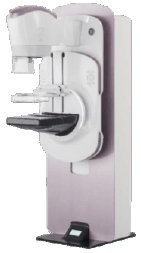Finding breast cancer early and getting state-of-the-art cancer treatment are two of the most important strategies for preventing deaths from breast cancer. Breast cancer that’s found early, when it’s small and has not spread, is easier to treat successfully. Getting regular screening tests is the most reliable way to find breast cancer early. Signature Healthcare recommends the American Cancer Society screening guidelines for women at average risk of breast cancer, and for those at high risk for breast cancer.
Who should be screened?
These guidelines are for women at average risk for breast cancer. For screening purposes, a woman is considered to be at average risk if she doesn’t have a personal history of breast cancer, a strong family history of breast cancer, or a genetic mutation known to increase risk of breast cancer (such as in a BRCA gene), and has not had chest radiation therapy before the age of 30. (See below for guidelines for women at high risk.)
What technology is available?
Signature Healthcare offers state of the art diagnostic tools to provide early breast cancer diagnosis. We offer computer-aided detection and digital breast tomosynthesis (3D) to help overcome the limitations of conventional mammography and find breast cancer as early as possible.
Computer-aided detection (CAD) systems search digitized mammographic images for abnormal areas of density, mass, or calcification that may indicate the presence of cancer. The CAD system highlights these areas on the images, alerting the radiologist to carefully assess this area.
Digital Breast Tomosynthesis also called three-dimensional 3-D mammography is an advanced form of breast imaging where multiple images of the breast from different angles are captured and reconstructed into a three-dimensional image set. Many studies have found that 3-D mammography appears to lower the chance of being called back after screening for follow-up testing. Women who had the 3-D tomosynthesis exam were also 15 percent less likely to need follow up tests. It also appears to find more breast cancers, and several studies have shown it can be helpful in women with more dense breasts.
Breast tomosynthesis may also result in:
Your physician will discuss the results with you or you may check the MyHealth portal for results.
Children
For safety reasons, children are not allowed in the exam rooms. If you must bring your child, please bring someone to watch them in the waiting room.
Discuss any recent changes or problems in your breasts with your health care provider before getting the mammogram. (If you have symptoms, you may need a diagnostic mammogram so special images can be taken of the area of concern.) Tell your doctor about prior surgeries, hormone use, whether you have a family or personal history of breast cancer, and if there's a possibility you are pregnant.
A few tips for getting a mammogram include bringing copies of your prior mammograms from outside facilities to make them available for comparison on the day of your exam, leaving jewelry at home, and tying your hair back to remove it from the imaging field. Don't wear deodorant, talcum powder or lotion under your arms or on your breasts as these may appear on the mammogram and interfere with correct diagnosis.

